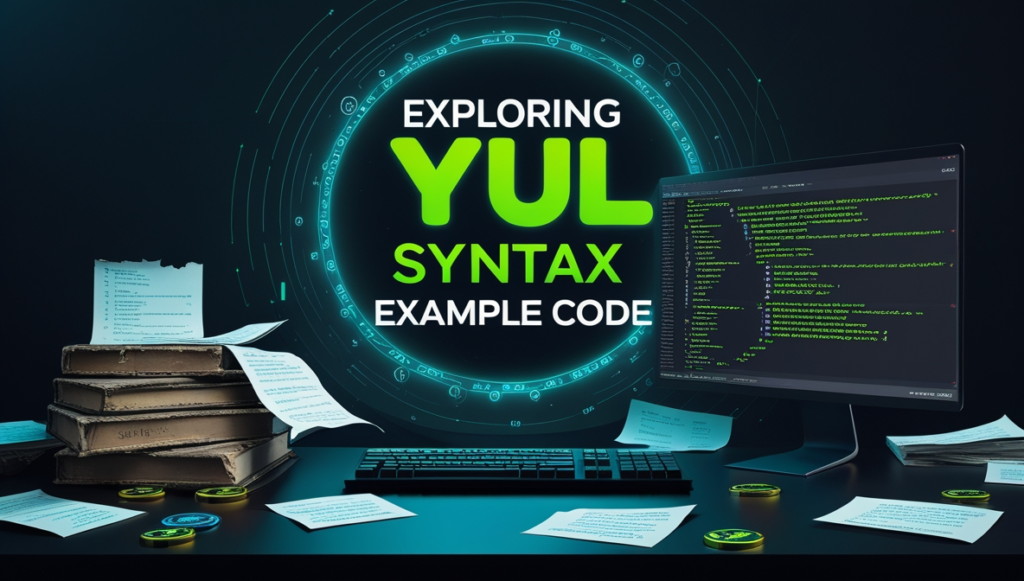Custom ERC-20 Token Using Yul Programming : Blockchain development is rapidly evolving, and Ethereum remains at the heart of this transformation. For developers striving to optimize performance, Yul programming emerges as a powerful tool. This chapter delves into “How to create an ERC20 token using Yul Assembly”, focusing on step-by-step guidance, real-world applications, and optimization techniques.
Whether you’re a beginner or an experienced developer, this tutorial will help you understand the ins and outs of Yul programming and Solidity Yul Assembly for creating an efficient ERC-20 token.
Table of Contents
Why Use Yul for ERC-20 Token Development?

ERC-20 tokens are a foundational component of the Ethereum ecosystem, powering decentralized finance (DeFi), gaming, and more. However, traditional Solidity implementations may lead to higher gas fees due to inefficiencies. This is where Yul programming shines, offering:
- Gas optimization: With lower-level control, Yul enables developers to reduce unnecessary computations.
- Improved performance: Direct interaction with the Ethereum Virtual Machine (EVM) makes processes faster and leaner.
- Flexibility: Yul provides developers with granular control over smart contract behavior.
Case Studies and Real-World Applications in Yul Programming

Analyzing Existing Contracts Optimized with Yul
Some of the most efficient Ethereum contracts rely on Yul. For example, Uniswap V3 integrates Yul in its core architecture to reduce gas consumption during swaps. By studying such contracts, developers can understand the strategic use of Yul in enhancing efficiency without compromising functionality.
Refactoring Solidity Code into Yul for Performance Improvement
Let’s consider a standard ERC-20 transfer function implemented in Solidity. Refactoring this into Yul can yield significant improvements. Instead of relying on high-level abstractions, Yul focuses on directly manipulating storage and calldata, cutting down gas costs.
Comparing Gas Consumption: Before and After Optimization
To highlight the benefits:
- Before Optimization: A Solidity-based ERC-20
transferfunction may cost 50,000 gas units. - After Optimization with Yul: The same function rewritten in Yul could drop to 30,000 gas units, showcasing tangible savings.
Implementing a Custom ERC-20 Token Using Yul Programming

This section provides a step-by-step guide to building an ERC-20 token using Yul programming language.
Step 1: Define Token Parameters
Start by deciding on:
- Token Name: E.g., “YulToken.”
- Symbol: E.g., “YUL.”
- Total Supply: The maximum number of tokens to be minted.
Step 2: Set Up Contract Storage
In Yul, storage management is explicit. Allocate specific slots for:
- Total supply
- Balances of addresses
- Allowances for delegated spending
This approach ensures clarity and avoids conflicts.
Step 3: Write the Constructor
The constructor initializes the token’s state, such as assigning the total supply to the deployer. In Yul, this involves using the sstore opcode, which stores data in the EVM.
Step 4: Implement Core Functions
balanceOf Function
This function retrieves the token balance of an address by directly accessing storage.
transfer Function
Transfers tokens between addresses. This function ensures:
- The sender has sufficient balance.
- The recipient’s balance is updated correctly.
approve and transferFrom Functions
Implementing these allows delegated token transfers, enabling contracts to interact with ERC-20 tokens seamlessly.
Exploring Yul Syntax and Example Code

Yul syntax is minimalistic, focusing on opcodes like mload, sload, and calldataload. Here’s a basic example for an ERC-20 transfer function:
function transfer(to, amount) -> success {
let from := caller()
let senderBalance := sload(add(keccak256(from, 0x20), 0x1))
if lt(senderBalance, amount) { revert(0, 0) }
sstore(add(keccak256(from, 0x20), 0x1), sub(senderBalance, amount))
sstore(add(keccak256(to, 0x20), 0x1), add(sload(add(keccak256(to, 0x20), 0x1)), amount))
success := 1
}Advantages of Using Yul for ERC-20 Tokens
- Enhanced Gas Efficiency: Reduced computational overhead makes transactions cheaper.
- Direct EVM Interaction: Yul eliminates unnecessary abstractions.
- Versatility: Yul can be used for other token standards, not just ERC-20.
ERC20 Token Using Yul Programming
To create an ERC-20 token using Yul, you will write a smart contract using Yul, a low-level language for the Ethereum Virtual Machine (EVM). Yul allows for more optimized and gas-efficient code compared to Solidity, but it is harder to write and understand. Here’s an example of a simple ERC-20 token contract in Yul.
object "MyToken" {
code {
// Runtime code
mstore(0x40, 0x80) // Set free memory pointer
sstore(0x00, 0) // Token name: 0 for the empty string
sstore(0x01, 0) // Token symbol: 0 for the empty string
sstore(0x02, 18) // Token decimals: 18
sstore(0x03, 0) // Total supply: 0, initialized later
// ERC20 balanceOf
balanceOf:
calldataload(4) // Get address
sload(keccak256(add(calldataload(4), 0), 32)) // Load balance from storage
return(0, 32)
// ERC20 transfer
transfer:
calldataload(4) // Get recipient address
calldataload(36) // Get transfer amount
sstore(keccak256(add(calldataload(4), 0), 32), sub(sload(keccak256(add(calldataload(4), 0), 32)), calldataload(36)))
sstore(keccak256(add(calldataload(4), 0), 32), add(sload(keccak256(add(calldataload(4), 0), 32)), calldataload(36))) // Update balances
return(0, 32)
default:
revert(0, 0)
}
}Explanation of key parts:
- Token Initialization:
- The
mstoreandsstoreinstructions are used to store the token’s data such as name, symbol, decimals, and the total supply.
- The
balanceOf:- It returns the balance of an address. The balance is retrieved from the contract storage using
keccak256hashing.
- It returns the balance of an address. The balance is retrieved from the contract storage using
transfer:- This function transfers tokens between two addresses. The sender’s balance is decreased, and the receiver’s balance is increased accordingly.
keccak256:- This is used to calculate the storage slot for each account’s balance, since ERC-20 uses mapping to track balances.
Steps to deploy:
- Compile the Yul code to bytecode using the Solidity compiler with Yul support.
- Deploy the bytecode on the Ethereum network (Testnet first, then Mainnet).
Since Yul is a low-level language, it’s important to have a strong understanding of the Ethereum Virtual Machine and its operations when writing and deploying contracts in Yul. This example provides the basic structure, but further optimizations and functions, such as approve, allowance, and transferFrom, would need to be added for a fully functional ERC-20 token.
Advanced Use Cases and Research
Yul+ Enhancements

The Yul+ programming extension introduces new features, such as structured error handling and inline comments, making it more user-friendly without compromising efficiency.
Role of Yul in Layer 2 Solutions
As Ethereum scales, Layer 2 solutions like zk-rollups benefit from Yul’s lightweight design. zkEVM implementations use Yul for optimized zero-knowledge proof generation, further reducing costs.
Best Practices for Beginners
- Understand EVM Basics: Familiarize yourself with how Ethereum handles storage, calldata, and gas.
- Start Small: Implement simple functions before diving into complete contracts.
- Leverage Yul Documentation: Refer to the official Yul documentation for opcode references and examples.
Final Thoughts
Implementing a custom ERC-20 token using Yul programming software may seem daunting initially, but the benefits of reduced gas fees and enhanced efficiency are well worth the effort. By combining a solid understanding of the Yul programming language with best practices, developers can create tokens that stand out in performance and cost-effectiveness.
If you’re eager to dive deeper into Ethereum development, learning Solidity Yul assembly and experimenting with Yul programming examples is the way forward. Begin your journey today, and take your blockchain projects to the next level!


